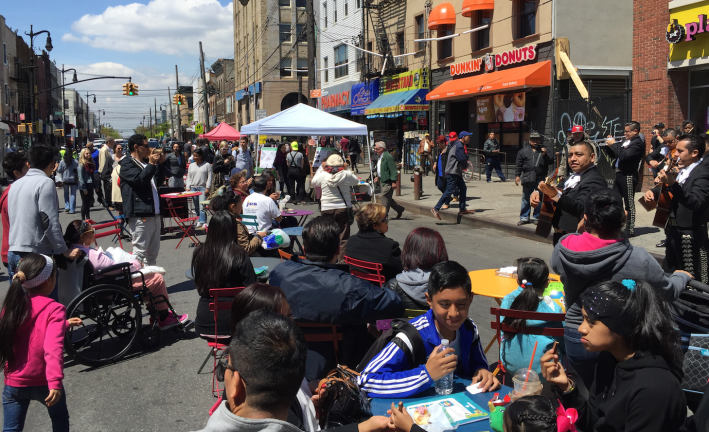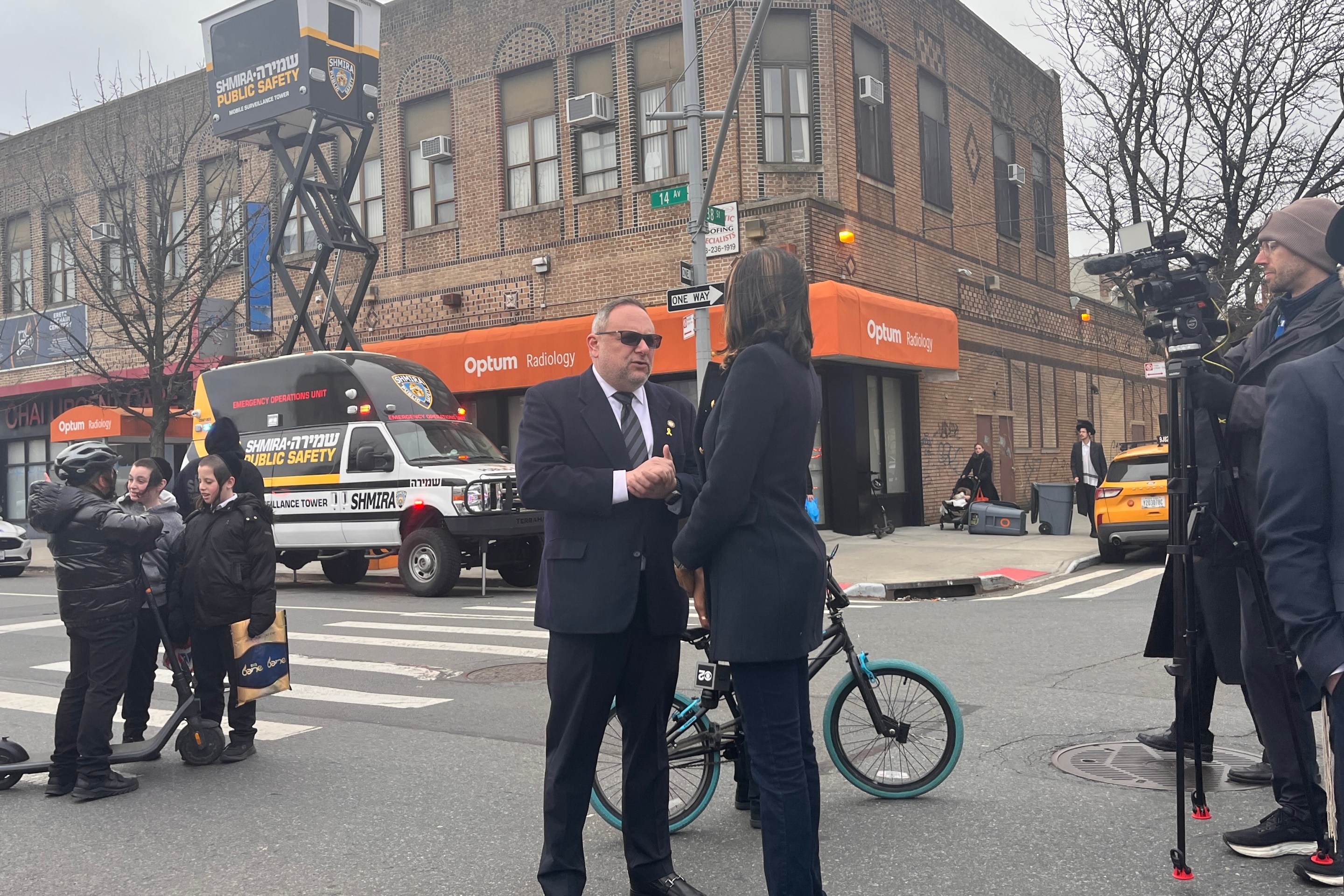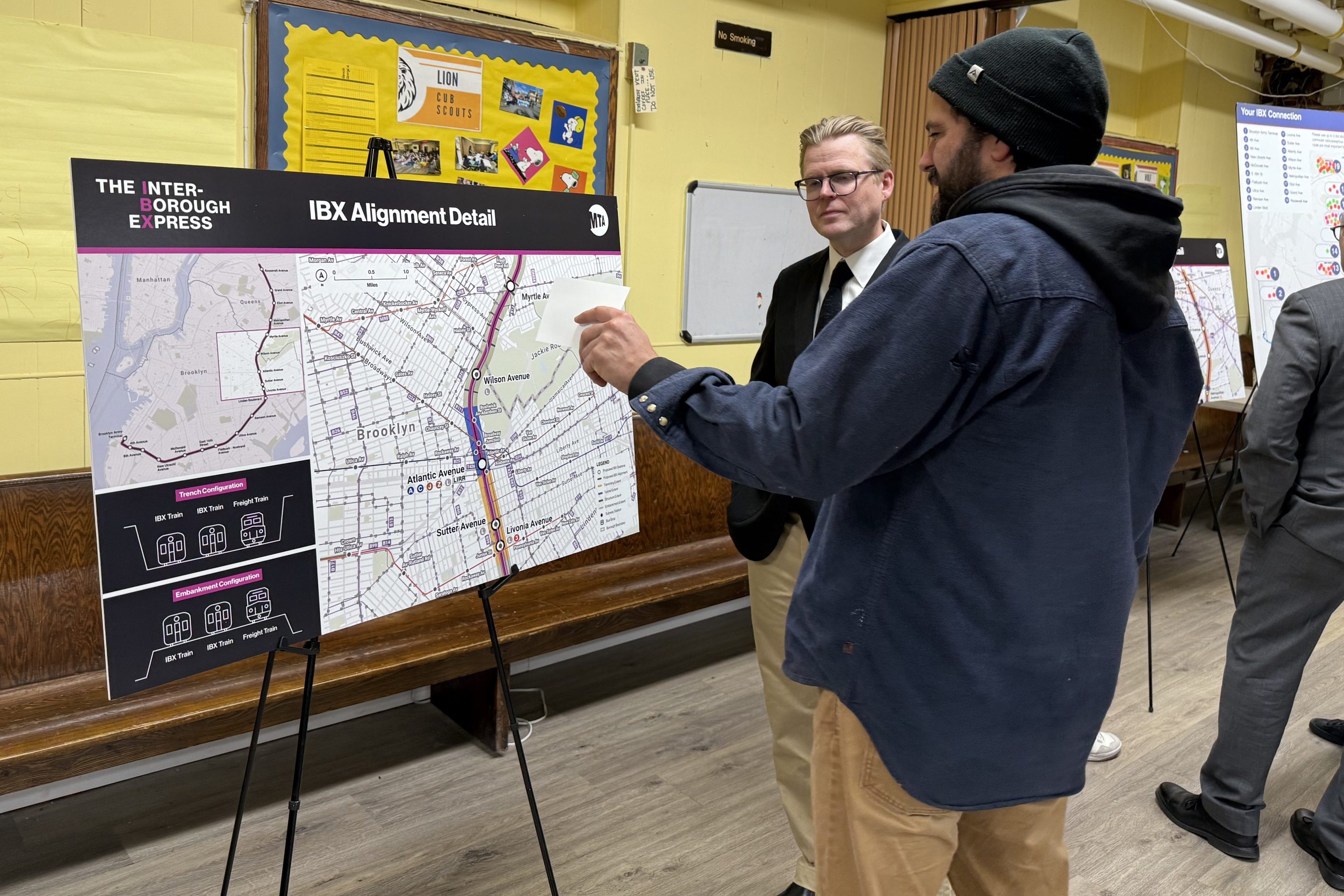
Three people have been killed by turning drivers at the crowded Myrtle-Wyckoff transit hub since 2009, and the local community board still won't vote for a city plan to improve pedestrian safety at the complex six-legged intersection.
Last Wednesday, Brooklyn Community Board 4 declined to endorse DOT’s plan to simplify the intersection and create a car-free plaza on one block of Wyckoff Avenue between Myrtle and Gates [PDF]. Since the project straddles the Brooklyn-Queens border, DOT will also seek a vote from Queens Community Board 5’s transportation committee tomorrow evening.
People outnumber vehicles three-to-one at the Myrtle-Wyckoff intersection, which is located at the convergence of two subway lines and six bus routes. The current configuration leads to too many conflicts between drivers and pedestrians: Three pedestrians were killed there between 2009 and 2014.
Two and a half years ago, hundreds of people gathered at the intersection to remember Ella Bandes, who was struck and killed by a bus driver in 2013, and call for safety improvements. Minor changes afterward were not enough to prevent the death of Edgar Torres, who had the right of way when he was struck and killed by a turning MTA bus driver in 2014.
Making a block of Wyckoff car-free would do what previous adjustments could not: give pedestrians safe passage between the train and the Ridgewood Bus Terminal on Palmetto Street. Turning movements would be dramatically simplified, reducing potential conflicts.
CB 4 District Manager Nadine Whitted could not provide a vote tally from Wednesday's meeting but said only two board members sided in favor of the project. Whitted did not explain why the board rejected the project other than to say members did not like the "bus reroutes," by which she was presumably referring to the B26, which currently utilizes the block of Wyckoff that would be pedestrianized.

Florent Morellet attended the meeting and was the only member of the public to speak in favor of the project. He said some attendees suggested that the three victims had been killed because they put themselves in harm's way. "The only reasonable person that was there was our councilman, [Antonio Reynoso], who stood up and said that this is hateful speech," said Morellet. "He said, you know, I’m not going to sit here silently if there is going to be more hateful speech."
Community board votes hold no legal sway over DOT or its projects, but in practice the department often scales back or even cancels street safety projects at the behest of local community boards. Reynoso has consistently argued that DOT should not let community boards obstruct street safety projects.
Ella Bandes's parents, Judy Kottick and Ken Bandes, said they were disappointed by the board's failure to support the project. "It’s so disheartening because every day we go without doing anything -- I mean, it’s Russian roulette," Kottick said. "It could be you [who gets killed], it could be someone on the community board, it could be someone else’s child."
Kottick and Bandes said they heard about Wednesday's meeting too late to attend, but have found CB 4 to be more concerned with driver convenience than pedestrian safety. When the board's transportation committee reacted to the project in May, Bandes said, "They were mainly concerned about the driving issues and how convenient it would be to be dropped off and cross the street."
Queens CB 5 has been much more responsive to the pedestrian safety concerns at the intersection, Kottick and Bandes said. In March, CB 5 Chair Vincent Arcuri told Streetsblog that while it was not his preference to make any streets car-free, he understood that other interventions had failed to make the intersection safe.
“Something has to be done, obviously,” he said at the time. "We’ve tried different things and we still haven’t stopped the fatalities. I have mixed feelings about the plaza, but what else can you do?"
Tomorrow's transportation committee meeting gets underway at the Queens CB 5 office, 61-23 Myrtle Avenue, at 7:30 p.m.





